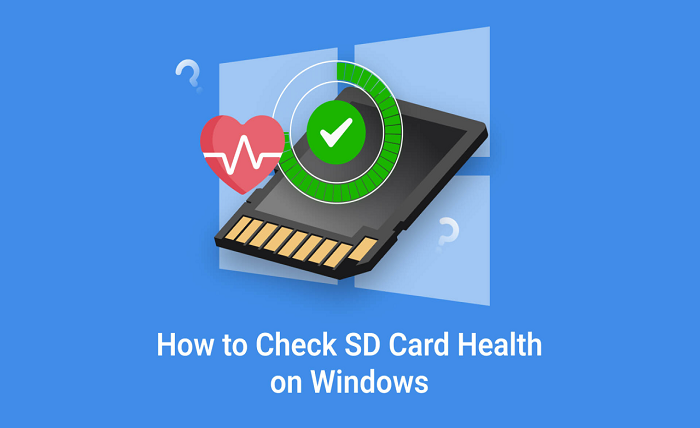Ensuring Longevity: How to Check SD Card Health on Windows

Introduction
SD cards are a convenient and widely used storage option, but like all digital storage, they are prone to wear and deterioration over time. For Windows users, maintaining the health of an SD card is crucial to avoid data loss. This blog post will guide you through various methods to check SD card health on Windows, helping you to diagnose potential issues before they result in data loss.
SD Card Health
Checking the health of your SD card is pivotal to prevent data corruption and loss. Windows offers several utilities and third-party tools that can help you assess the health of your SD card. This section will explain why regular health checks are important and what signs indicate your SD card may be failing.
Using Windows Built-in Tools to Check SD Card Health
Windows provides built-in tools that can be used to check the health of SD cards. This includes using the Windows Explorer to check for readability and file errors, and the Disk Management tool to assess the SD card’s status. We’ll detail how to use these tools effectively to keep tabs on your SD card’s condition.
Third-Party Software for Comprehensive Analysis
For those who need more detailed information about their SD card‘s health, third-party software offers additional functionalities. Programs like H2testw and SD Memory Card Formatter go beyond basic checks, providing detailed reports on the endurance and speed of SD cards. This segment will cover the most trusted programs available for Windows users.
The Role of Chkdsk in Maintaining SD Card Health
The Chkdsk command is a versatile tool in Windows that can scan and fix file system errors on your SD card. Utilizing Chkdsk to check SD card health can help fix bad sectors and file system errors that could potentially lead to data loss.
Preventative Measures to Enhance SD Card Longevity
Prevention is better than cure, especially when it comes to data storage. This part of the post will discuss how to handle and store SD cards to maximize their lifespan, and how to safely remove them from devices to avoid data corruption.
Symptoms of a Failing SD Card
Recognizing the early signs of SD card failure is crucial for taking timely action. This section will highlight the common symptoms such as frequent error messages, slow data transfer rates, and corrupted files, which may indicate that it’s time to check your SD card health on Windows.
How to Interpret SD Card Health Reports
Once you have a health report from either built-in or third-party tools, understanding it is key to making informed decisions about your SD card. We’ll guide you through the common metrics and what they mean for the health and performance of your SD card.
Best Practices for SD Card Usage on Windows
To ensure optimal performance and longevity of your SD cards while using them on Windows devices, adopting certain best practices is advisable. This section will provide tips on file management, formatting preferences, and software updates.
Troubleshooting Common SD Card Issues
Sometimes, even with regular checks, SD cards can encounter problems. This part will address the most common issues faced by Windows users and provide step-by-step troubleshooting methods to resolve these issues efficiently.
Future of SD Card Technology and Health Tools
As technology evolves, so do the tools for checking and maintaining the health of SD cards. This segment will explore upcoming advancements in SD card technology and predictive health monitoring tools that could revolutionize how we maintain data integrity.
Conclusion
Regularly checking your SD card health on Windows is essential to safeguard your data and extend the life of your storage device. By utilizing built-in tools, third-party software, and adopting best practices, you can ensure that your SD card remains reliable for years to come. Remember, early detection of potential issues can save you from unexpected data loss.
FAQs
- How often should I check the health of my SD card? Regular checks are recommended every few months or immediately if you notice any signs of failure or performance issues.
- What should I do if my SD card fails during a health check? Backup your data immediately if possible, and consider replacing the SD card if it shows signs of significant wear or damage.
- Can checking the health of an SD card cause data loss? No, checking the health should not cause data loss, but always back up data as a precaution before performing any checks or repairs.
- Is it necessary to use third-party software to check SD card health? While Windows built-in tools can perform basic checks, third-party software may provide more comprehensive insights, especially for diagnosing tricky issues.
- How can I improve the lifespan of my SD card? Avoid exposing your SD card to extreme temperatures, keep it clean from dust and dirt, and always safely eject it from devices after use.




